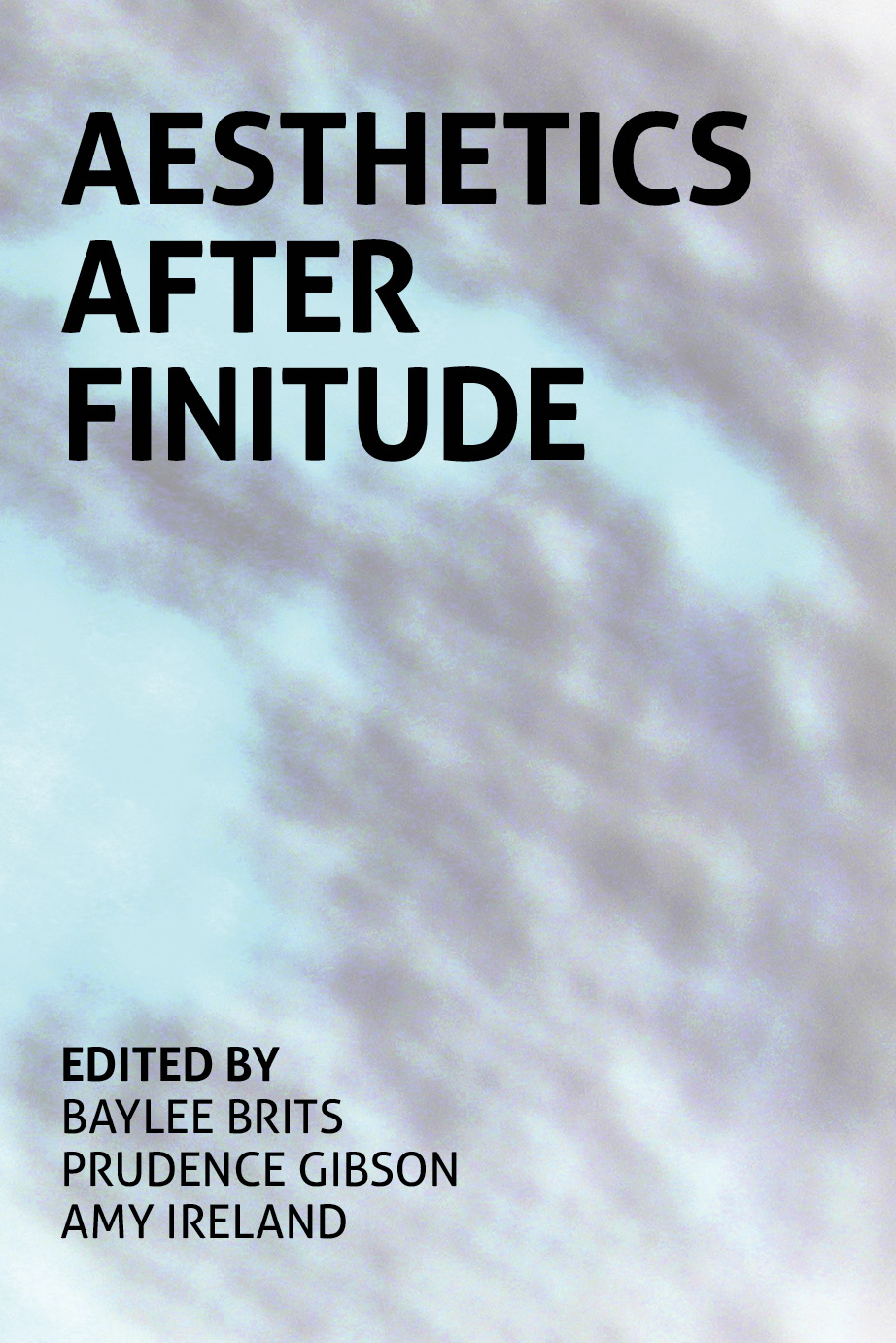Matthew Fuller, Olga Goriunova: Bleak Joys: Aesthetics of Ecology and Impossibility (2019)
Filed under book | Tags: · aesthetics, animal, chance, ecology, environment, ethics, forest, individuation, nature, philosophy, plants, subject, territory, theory, virtuality

“Bleak Joys develops an understanding of complex entities and processes—from plant roots to forests to ecological damage and its calculation—as aesthetic. It is also a book about “bad” things, such as anguish and devastation, which relate to the ecological and technical but are also constitutive of politics, the ethical, and the formation of subjects.
Avidly interdisciplinary, Bleak Joys draws on scientific work in plant sciences, computing, and cybernetics, as well as mathematics, literature, and art in ways that are not merely illustrative of but foundational to our understanding of ecological aesthetics and the condition in which the posthumanities are being forged. It places the sensory world of plants next to the generalized and nonlinear infrastructure of irresolvability—the economics of indifference up against the question of how to make a home on Planet Earth in a condition of damaged ecologies. Crosscutting chapters on devastation, anguish, irresolvability, luck, plant, and home create a vivid and multifaceted approach that is as remarkable for its humor as for its scholarly complexity.
Engaging with Deleuze, Guattari, and Bakhtin, among others, Bleak Joys captures the modes of crises that constitute our present ecological and political condition, and reckons with the means by which they are not simply aesthetically known but aesthetically manifest.”
Publisher University of Minnesota Press, Minneapolis, 2019
Posthumanities series, 53
ISBN 9781517905521, 1517905524
xxviii+192 pages
PDF (6 MB)
Comment (0)Baylee Brits, Prudence Gibson, Amy Ireland (eds.): Aesthetics After Finitude (2016)
Filed under book | Tags: · aesthetics, anthropocene, fiction, human, immanence, noise, philosophy, sound, subject, theory

“Traditionally aesthetics has been associated with phenomenal experience, human apprehension and an appreciation of beauty—the domains in which human cognition is rendered finite. What is an aesthetics that might occur ‘after finitude’?”
Contributions by Marc Couroux, Prudence Gibson, Thomas Sutherland, Lendl Barcelos, Douglas Kahn, Adam Hulbert, Baylee Brits, Stephen Muecke, Laura Lotti, Christian R. Gelder, Simon O’Sullivan, Tessa Laird, Chris Shambaugh (and Maudlin Cortex), Chaim Horowitz, and Amy Ireland.
Afterword by Justin Clemens
Publisher re.press, Melbourne, Dec 2016
Anamnesis series
Creative Commons BY-NC-ND License 2.5
ISBN 9780980819793, 0980819792
241 pages
Conference (2015)
Publisher
WorldCat
October, 155: A Questionnaire on Materialisms (2016)
Filed under survey | Tags: · actor-network theory, anthropocene, art, human, materialism, networks, object-oriented ontology, philosophy, speculative realism, subject, subjectivity, thing
“Recent philosophical tendencies of “Actor-Network Theory,” “Thing Theory,” “Object-Oriented Ontology,” “Speculative Realism,”and “Vibrant Materialism,” have profoundly challenged the centrality of subjectivity in the humanities and, arguably, the perspectives that theories of the subject from the psychoanalytic to the Foucauldian have afforded (on the operations of power, the production of difference, and the constitution of the social, for instance). At least four moves characterize these discourses:
• Attempting to think the reality of objects beyond human meanings and uses. This other reality is often rooted in “thingness” or an animate materiality.
• Asserting that humans and objects form networks or assemblages across which agency and even consciousness are distributed.
• Shifting from epistemology, in all of its relation to critique, to ontology, where the being of things is valued alongside that of persons.
• Situating modernity in geological time with the concept of the “Anthropocene,” an era defined by the destructive ecological effects of human industry.
Many artists and curators, particularly in the UK, Germany, and the United States, appear deeply influenced by this shift. Is it possible, or desirable, to decenter the human in discourse on art in particular? What is gained in the attempt, and what—or who—disappears from view? Is human difference—gender, race, power of all kinds—elided? What are the risks in assigning agency to objects; does it absolve us of responsibility, or offer a new platform for politics?” (from the introduction)
Responses by Emily Apter, Ed Atkins, Armen Avanessian, Bill Brown, Giuliana Bruno, Julia Bryan-Wilson, D. Graham Burnett, Mel Y. Chen, Andrew Cole, Christoph Cox, Suhail Malik, T. J. Demos, Jeff Dolven, David T. Doris, Helmut Draxler, Patricia Falguières, Peter Galison, Alexander R. Galloway, Rachel Haidu, Graham Harman, Camille Henrot, Brooke Holmes, Tim Ingold, Caroline A. Jones, Alex Kitnick, Sam Lewitt, Helen Molesworth, Alexander Nemerov, Michael Newman, Spyros Papapetros, Susanne Pfeffer, Gregor Quack, Charles Ray, Matthew Ritchie, André Rottmann, Amie Siegel, Kerstin Stakemeier, Artie Vierkant, McKenzie Wark, Eyal Weizman, Christopher S. Wood, and Zhang Ga.
Edited by David Joselit, Carrie Lambert-Beatty, and Hal Foster
Publisher MIT Press, Winter 2016
ISSN 0162-2870
108 pages
PDF (updated on 2017-11-24)
Comment (0)
